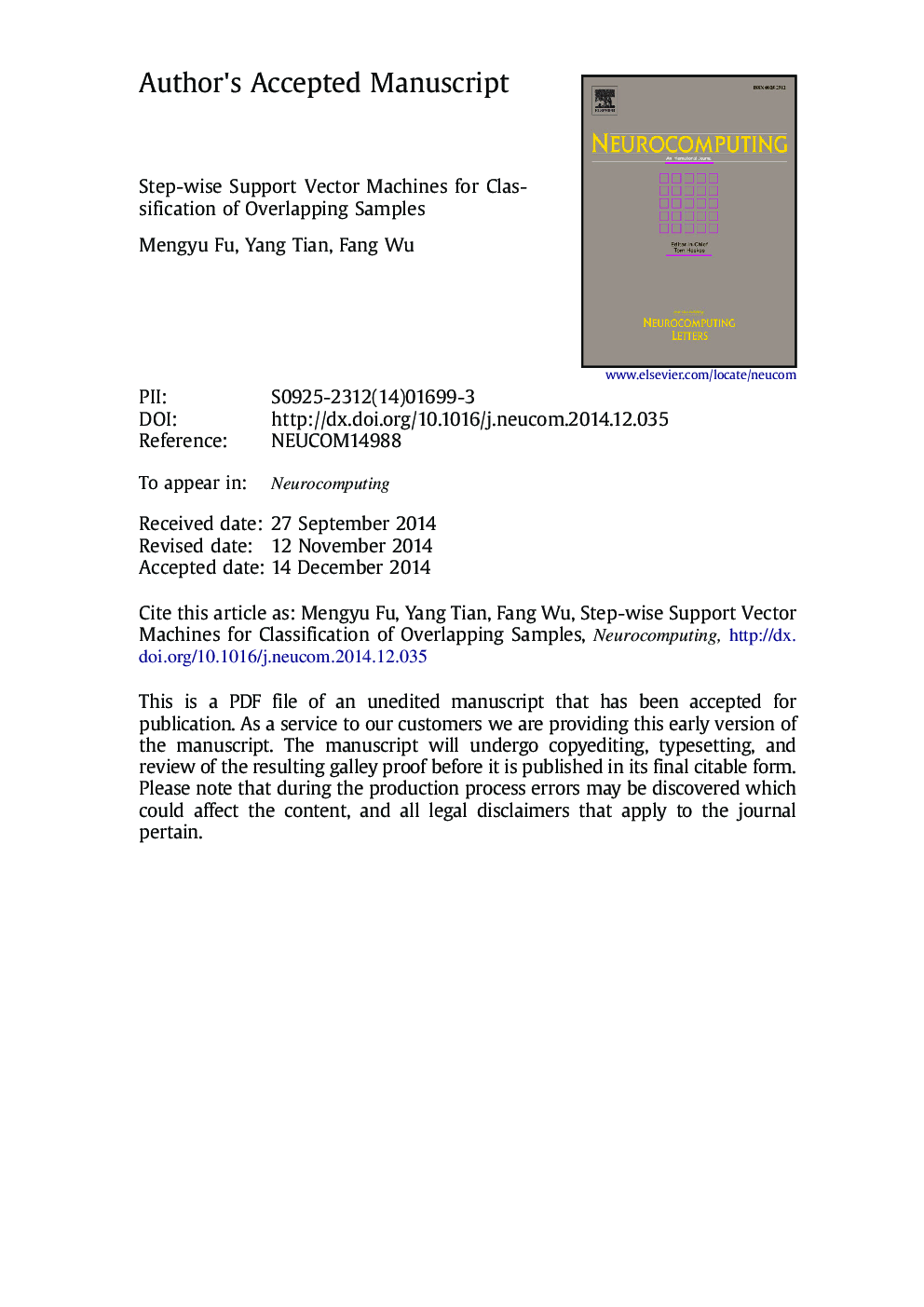| Article ID | Journal | Published Year | Pages | File Type |
|---|---|---|---|---|
| 6865973 | Neurocomputing | 2015 | 9 Pages |
Abstract
Among machine learning algorithms, Support Vector Machine (SVM) is outstanding for its high efficiency and good generalization ability. This paper mainly concerns the classification performance of SVMs for multiple classes and auxiliary algorithms combined with SVMs. These auxiliary algorithms include Recursive Feature Elimination (RFE) algorithm, parameters optimizing methods and Two-Step Classification strategy. Results are given under data-based framework that classification ability and operation efficiency of SVMs are both improved when dimension is reduced; and Two-Step Classification SVM (TSC-SVM) works well under circumstances that samples overlap with each other seriously. In TSC-SVM, differences between adjacent samples are denoised by wavelet transform and magnified by a proper weighting function, after samples are sorted into correct groups in the first step. Discussions and comparisons are based on abalone dataset. According to the simulations, it is believed that step-wise SVMs have superior classification ability.
Related Topics
Physical Sciences and Engineering
Computer Science
Artificial Intelligence
Authors
Mengyu Fu, Yang Tian, Fang Wu,
